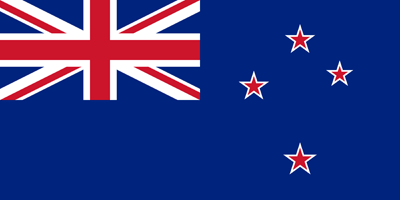FAQ
- Please refer to the Shipping policy for shipping inquiries.
- Please refer to the Refund policy and Terms of service for refund and return inquiries.
Q. Do you have your own hives?
Yes, we are a beekeeping company registered with the New Zealand government and have apiaries in north of Auckland for Royal Jelly and other bee products. So, we can control the process from hive till it reaches customers.
Q. When and how should I eat fresh royal jelly?
Please put about 2g (half teaspoon) under your tongue, letting it melt, and then swallow slowly.
It's a bit sour because of its acidity (about 4 pH). If you feel it is too sour, it is recommended to have it mixed with honey. Please use a wooden or plastic teaspoon instead of a steel teaspoon and do not eat with sour foods such as yogurt or plum.
Q. What is 10-HDA?
10-HDA (hydroxy-2-decenoic acid) is known to help improve blood flow and a strong anti-cancer action, and its content determines the quality of royal Jelly.
The international standard (ISO 12824) for 10-HDA must be at least 1.4%. 10-HDA of Royal jelly from China is about 1.6-2%, and Korea's is usually in the early 2%, but royal jelly produced by ourselves in New Zealand is a premium grade with over 3.1%.
We think that the clean and abundant nature of New Zealand makes this difference in quality.
Q. What is the difference between fresh royal jelly and powdered royal jelly?
Fresh royal jelly collected from a hive is a light yellow and looks like yogurt. Royal jelly must be frozen immediately after collection, so it is difficult to store and transport. Therefore, fresh royal jelly is freeze-dried and made into capsules.
Most royal jelly powder capsules sold in the market contain bean powder as a filler.
Q. Many powdered royal jelly products are sold in New Zealand. Is all the royal jelly produced in New Zealand?
Most of the raw materials for capsule and tablet royal jelly products are from China. It is marked as ‘Made in New Zealand’ just by putting it in the capsule. It is regrettable that there is currently no government regulation around this.
Q. How long till I receive my order?
In New Zealand, we send products via NZ Post, and it usually takes 1-3 working days. In the case of overseas, we send products by DHL, and it usually takes 7-10 working days.
Q. My honey has a lump of sugar crystals. Is this normal?
Honey is one of the very few foods that does not spoil, and it can form lumps and go sugary depending on the temperature. This is normal and is one of honey's unique characteristics.
We recommend storing your honey under 20 degrees Celsius in a cool and dark place.
Q. Does honey expire?
Honey is originally a non-perishable food.
However, for export honey overseas, the Best Before date for honey is 5 years. It is 4 years for bee pollen, 3 years for the honey mixed with other bee products, and 3 years for other bee products such as royal jelly as well.
All Rojel products have their Best Before dates printed on the label in accordance with the RMP regulations.
The Best Before date indicates the ideal timeframe for product guaranteeing its potency and quality.
Q. Why is the colour and consistency of honey different?
Honey is a natural product made by honeybees. Therefore, it depends on the weather, season, region, and especially on the type of nectar sources. Normally, clover honey is flowable, and Pohutukawa honey is white. Manuka honey has a thicker consistency and has more of an orange/brown colour.
Q. What is matured honey?
To produce honey, honey bees add the enzyme to gathered nectar, which converts sucrose into glucose and fructose. The nectar in honeycomb is watery. The bees evaporate excess moisture by flapping their wings until the honey is ripened or mature, then seal the store cells with waxy lids when the moisture is 16-18%.
This honey is called matured honey. High moisture can make honey ferment and the quality deteriorates.
The moisture of matured honey is about 16%.
Q. What is the difference between MG/MGO and UMF?
MG is an anti-inflammatory ingredient of Manuka honey identified by the University of Dresden in Germany, a unit of antibacterial levels recognised by the New Zealand government along with UMF.
Manuka honey must be tested for MG or UMF by a New Zealand accredited laboratory and the figures must be labelled.
We also mark MG figures on the label.
MG vs UMF Activity Ratings Comparison
| MG | UMF |
| 50+ | 3.7+ |
| 60+ | 4.2+ |
| 83+ | 5.0+ |
| 100+ | 7.6+ |
| 200+ | 8.5+ |
| 263+ | 10+ |
| 512+ | 15+ |
| 823+ | 20+ |
Rojel Bank Account: ASB Bank 12-3136-0197678-00


